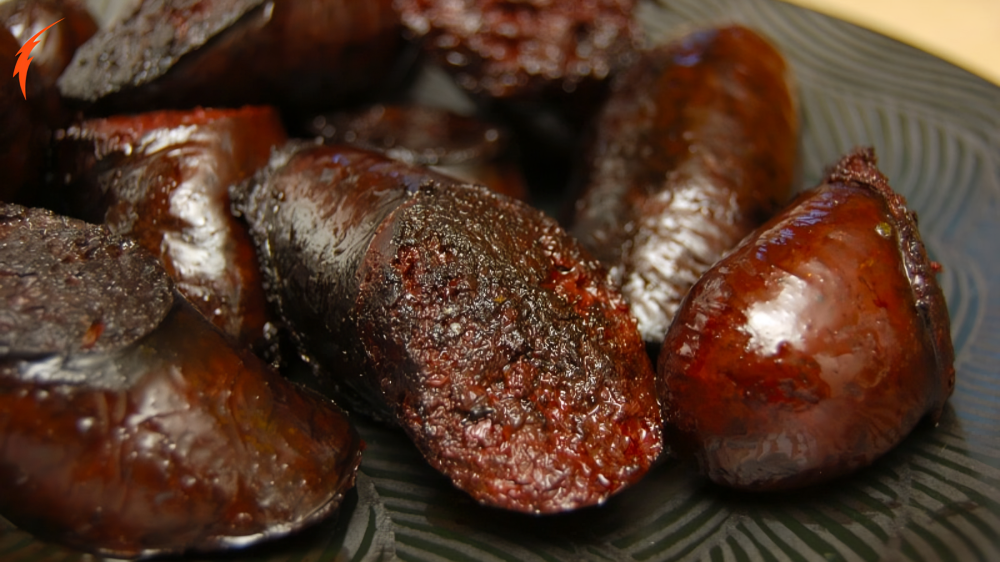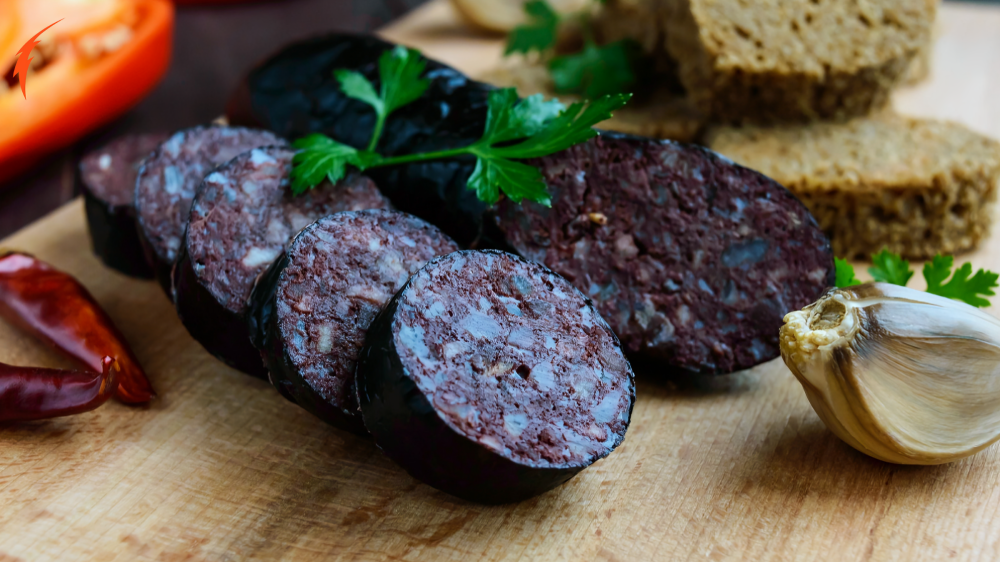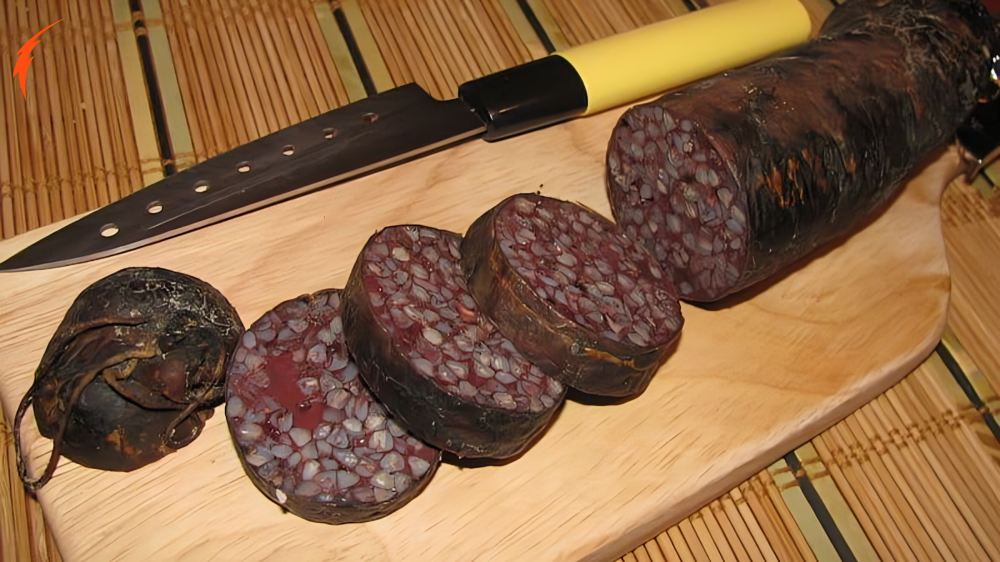Blood sausage, a dish made from animal blood, fat, and other ingredients, has been part of culinary traditions around the world for centuries. Whether you call it black pudding in England, morcilla in Spain, or boudin noir in France, blood sausage is either celebrated as a gourmet delicacy or approached with hesitation due to its unique composition. But is blood sausage a gourmet treat, or an acquired taste? Let’s dive into its history, global variations, nutritional benefits, and why it remains a controversial dish.
The History of Blood Sausage
Origins of Blood Sausage
Blood sausage dates back to ancient times, when no part of an animal was wasted after slaughter. Societies would preserve blood by mixing it with fat, grains, or herbs, stuffing it into casings made from intestines. This was an efficient way to utilize the entire animal, and as a result, blood sausage became a staple in many cultures worldwide.
In Homer’s Odyssey, a reference to a type of blood sausage appears, suggesting that even the ancient Greeks had a version of this dish. The Romans, too, were known for their love of this rich and savory sausage, which they prepared in various forms and flavors.
Blood Sausage Across the World
From Europe to Latin America, blood sausage has undergone numerous transformations. Each culture that has adopted it has put its unique spin on the recipe, adding local ingredients and flavors.
- In the UK, it’s known as black pudding, traditionally made with oats and onions, often served as part of a full English breakfast.
- In Spain, the variety is called morcilla, often flavored with garlic, rice, or spices, depending on the region.
- In France, boudin noir is the sophisticated version of blood sausage, commonly served in gourmet restaurants.
- In Korea, blood sausage is known as soondae, popular street food stuffed with noodles, vegetables, and barley.
The fact that blood sausage appears in so many parts of the world is a testament to its versatility and enduring appeal.

Gourmet Treat or Acquired Taste?
Blood Sausage as a Gourmet Treat
In gourmet circles, blood sausage is celebrated for its deep, rich flavor and ability to absorb and showcase the tastes of the ingredients it is combined with. Chefs in high-end restaurants often use blood sausage in creative ways, incorporating it into fine dining menus alongside luxurious items like foie gras, lobster, or truffles.
In places like Spain and France, blood sausage is elevated with thoughtful preparation. For example, morcilla might be grilled and served with sweet caramelized onions or paired with a sharp Manchego cheese. In France, boudin noir is typically pan-fried and served with sautéed apples, creating a perfect balance between savory and sweet.
Blood Sausage as an Acquired Taste
While some appreciate blood sausage for its culinary depth, others find it challenging due to its texture and the concept of eating blood. For many, the flavor of blood sausage is something that takes getting used to, especially when it’s prepared in a way that emphasizes the blood’s iron-rich flavor.
Its unique texture—crumbly yet moist—can be unfamiliar, and the metallic taste of blood can be off-putting for first-timers. However, those who give sausage a chance often find themselves enjoying it once they become accustomed to the flavor profile.
The Nutritional Value of Blood Sausage
Rich in Nutrients
One of the reasons a sausage has stood the test of time is its impressive nutritional value. It’s full of protein, iron, and important nutrients. The high iron content makes it an excellent food for combating anemia or iron deficiency.
- Iron: Blood is naturally rich in iron, which is crucial for maintaining healthy blood and oxygen flow in the body.
- Protein: The sausage’s combination of blood and meat makes it a high-protein dish, ideal for muscle repair and growth.
- Vitamins: sausage is also rich in B vitamins, especially B12, which plays a role in energy production and the functioning of the brain and nervous system.
High in Fat
However, sausage can be high in fat, particularly saturated fats, due to the addition of animal fat in the mixture. This can make it a calorie-dense food, which may not align with some people’s dietary goals.
It’s also important to note that the nutritional content of sausage can vary depending on the recipe. Some versions, like morcilla, may be bulked up with rice or grains, which changes the macronutrient composition.

How to Cook and Serve Blood Sausage
Cooking Methods
There are various ways to cook sausage, depending on personal preference and the recipe at hand.
- Grilling: One of the simplest methods is to grill sausage. This caramelizes the outer layer, giving it a nice, crispy texture.
- Pan-frying: In France, boudin noir is often pan-fried in butter and served with sweet accompaniments like apples or onions.
- Boiling: Some traditional recipes call for boiling sausage, which keeps it moist but doesn’t create the same crispy texture as grilling or frying.
Serving Ideas
sausage is versatile and can be paired with a wide variety of sides and accompaniments. Here are a few ideas for serving it:
- With potatoes: The starchiness of potatoes complements the richness of sausage, making mashed, roasted, or fried potatoes an ideal side dish.
- With fruit: Apples, pears, or figs are commonly served with sausage to add a sweet contrast to its savory flavor.
- With grains: rice, couscous, or polenta can act as a hearty base for a dish featuring sausage.
- For breakfast: In the UK and Ireland, sausage (or black pudding) is often served with eggs, bacon, and toast as part of a traditional breakfast.
Why Blood Sausage Remains Controversial
The “Blood” Factor
One of the reasons Sausage divides people is the main ingredient: blood. While blood has been used in traditional dishes for centuries, it can still make some diners uneasy. For those unfamiliar with the concept, the idea of eating blood can be off-putting or even considered taboo.
However, once people try it, many find that the flavor is not as strong or strange as they might have anticipated. The other ingredients in the sausage (like spices, fat, and grains) often mask the taste of the blood, creating a well-rounded and savory experience.
Health Concerns
As mentioned earlier, sausage is high in fat, which raises health concerns, particularly for people with conditions like high cholesterol or heart disease. However, like any indulgent food, it can be enjoyed in moderation as part of a balanced diet.
More: Reddit
Some people also worry about the sourcing and preparation of the blood used in sausages. It’s important to source sausage from reputable butchers or producers who follow food safety standards to ensure the blood used is fresh and safe for consumption.
Is Blood Sausage for You?
So, is sausage a gourmet treat or an acquired taste? The answer largely depends on your personal preferences and cultural background. For some, it’s a nostalgic comfort food, reminding them of home-cooked meals. For others, it’s a daring dish that represents a culinary adventure.
Ultimately, sausage is bothgourmet in its sophisticated preparation and an acquired taste due to its unique ingredients. If you’re a foodie looking to explore new flavors, trying sausage may be a rewarding experience that expands your palate.

Conclusion
Blood sausage holds a unique place in global cuisine. Whether you consider it a gourmet delicacy or an acquired taste, its rich history, cultural significance, and nutritional value make it more than just a curious dish. For those brave enough to venture into the world of sausage, the payoff is a flavorful, hearty meal that can be enjoyed in various ways, from breakfast to dinner, and everything in between.
Frequently Asked Questions (FAQ) about Blood Sausage
- What is a blood sausage?
- Blood sausage is a type of sausage made from animal blood, usually pork or beef, mixed with fillers like fat, grains, and spices. It’s a traditional dish in many cultures, known for its rich and savory flavor.
- What ingredients are typically used in blood sausages?
- Common ingredients in blood sausage include animal blood (usually pork or beef), fat, rice, oats, barley, breadcrumbs, and various seasonings like salt, pepper, garlic, and herbs.
- Which countries traditionally eat blood sausages?
- Blood sausage is enjoyed in many countries, including Spain (morcilla), the United Kingdom (black pudding), Germany (blutwurst), France (boudin noir), and Korea (soondae), among others.
- Is blood sausage healthy?
- Blood sausage is high in iron and protein, but it can also be high in fat and cholesterol. While it can provide nutritional benefits, it should be eaten in moderation due to its rich, fatty content.
- How is blood sausage prepared?
- Blood sausage is often boiled, fried, or grilled. It can be served as part of breakfast, with potatoes, or as an ingredient in stews and other dishes.


